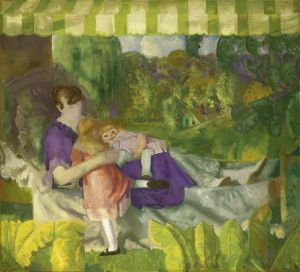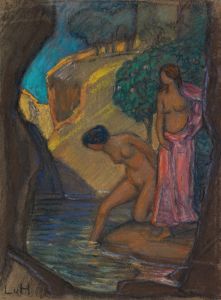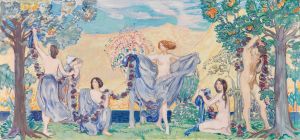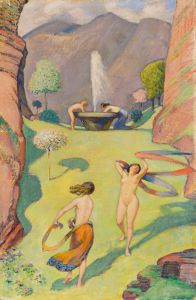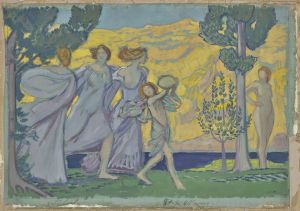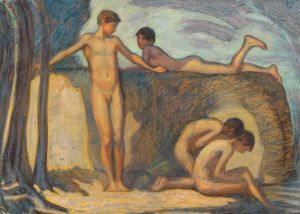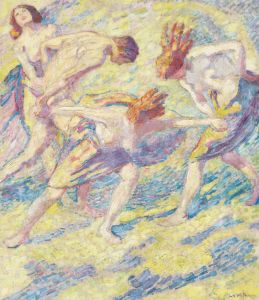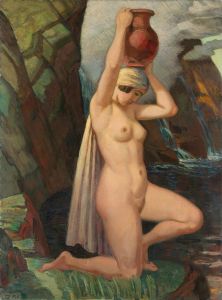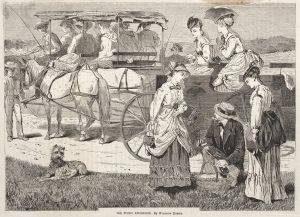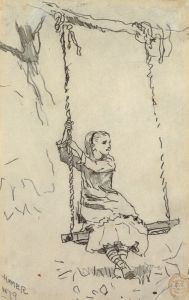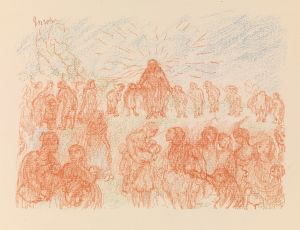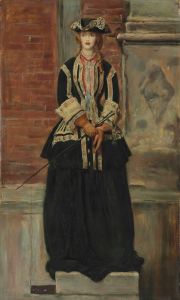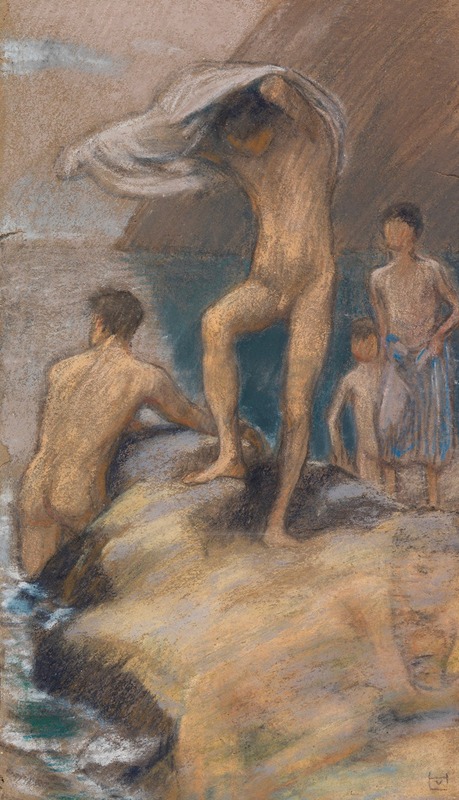
Badende Knaben
A hand-painted replica of Ludwig von Hofmann’s masterpiece Badende Knaben, meticulously crafted by professional artists to capture the true essence of the original. Each piece is created with museum-quality canvas and rare mineral pigments, carefully painted by experienced artists with delicate brushstrokes and rich, layered colors to perfectly recreate the texture of the original artwork. Unlike machine-printed reproductions, this hand-painted version brings the painting to life, infused with the artist’s emotions and skill in every stroke. Whether for personal collection or home decoration, it instantly elevates the artistic atmosphere of any space.
Ludwig von Hofmann was a prominent German painter and graphic artist associated with the Jugendstil movement, which is the German counterpart to Art Nouveau. His work is characterized by its idealized depictions of youth and nature, often imbued with a sense of harmony and tranquility. One of his notable works is "Badende Knaben," which translates to "Bathing Boys."
"Badende Knaben" exemplifies Hofmann's fascination with the human form and his ability to capture the essence of youthful vitality and innocence. The painting depicts a group of young boys bathing, a theme that Hofmann revisited frequently in his career. This subject matter reflects the Jugendstil movement's emphasis on natural beauty and the celebration of life, as well as the influence of classical antiquity, which often featured similar themes of youth and nature.
Hofmann's technique in "Badende Knaben" showcases his skillful use of color and composition. The painting is likely characterized by soft, flowing lines and a harmonious color palette that enhances the serene and idyllic atmosphere of the scene. His approach often involved a blend of realism and idealism, capturing the physicality of the human body while also imbuing it with a sense of ethereal beauty.
The setting of "Badende Knaben" is typically natural, with the boys depicted in a landscape that suggests a secluded, peaceful environment. This choice of setting aligns with Hofmann's broader artistic themes, which often explore the relationship between humanity and nature. The natural surroundings serve to emphasize the purity and simplicity of the boys' activities, reinforcing the painting's overall theme of innocence and the joy of youth.
Ludwig von Hofmann's work, including "Badende Knaben," is often associated with a broader cultural movement in Germany at the turn of the 20th century that sought to break away from the rigid academic traditions of the past. Instead, artists like Hofmann embraced new styles and themes that reflected the changing social and cultural landscape of the time. His paintings often convey a sense of optimism and a longing for a return to a more harmonious and natural way of life.
"Badende Knaben" is a testament to Hofmann's ability to capture the beauty and vitality of youth, a theme that resonates with the ideals of the Jugendstil movement. His work continues to be appreciated for its aesthetic qualities and its contribution to the development of modern art in Germany. While specific details about the painting's provenance or current location might not be widely documented, its significance within Hofmann's oeuvre and its reflection of the artistic trends of its time remain clear.
Overall, Ludwig von Hofmann's "Badende Knaben" is a fine example of the Jugendstil movement's celebration of nature, youth, and beauty, encapsulating the artist's vision of an idealized world where humanity and nature exist in perfect harmony.





